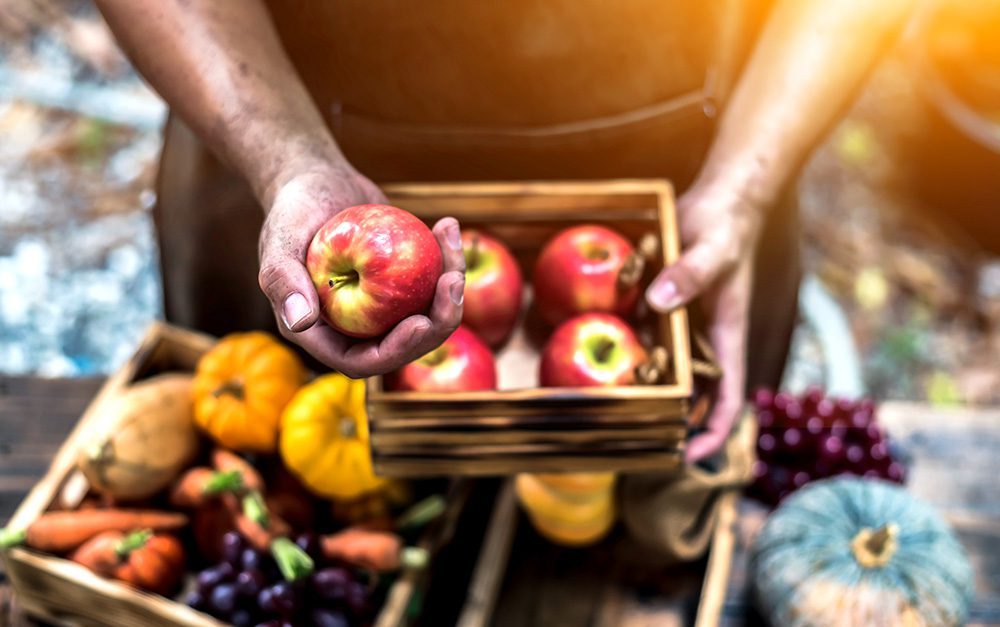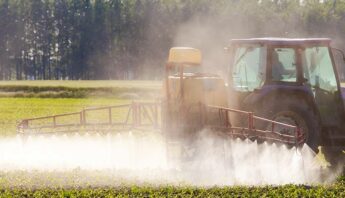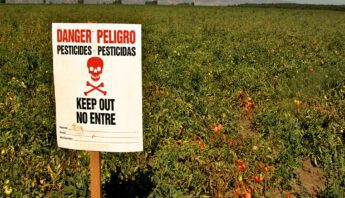Most of us think about food in terms of how what we eat might impact our health or the health of our families. So concern about pesticide residues on food are how most people come to the problem of pesticides.
At PAN, we think it’s important to provide solid information about the realities and risks of pesticide residues, connect some dots about the power of consumer choices, and then come together to push for deeper, more systemic change.
Because everybody deserves both healthy food and a safe workplace.
What’s on your food?
 The overwhelming majority of pesticides used on U.S. farms do not show up on our food. And yet, when researchers at the Centers for Disease Control sampled Americans for metabolites of the neurotoxic insecticide chlorpyrifos, it showed up in 93 percent of the those tested.
The overwhelming majority of pesticides used on U.S. farms do not show up on our food. And yet, when researchers at the Centers for Disease Control sampled Americans for metabolites of the neurotoxic insecticide chlorpyrifos, it showed up in 93 percent of the those tested.
The American Academy of Pediatrics points to food as the primary source of children’s exposure to pesticides.
But is it a problem? How much pesticide exposure from your diet is too much? The question is complicated, depending both on the pesticide and who’s being exposed.
We built a digital “decoder ring” to help you understand the risks. WhatsOnMyFood.org links pesticide food residue data from the USDA with toxicological profiles for each chemical, making this information easily searchable. Some examples of what you’ll find:
- 54 different pesticides were found on spinach, including five that are linked to cancer;
- Peaches and pears have the most pesticides found among the baby foods sampled (22 and 26, respectively); and
- 47 residues were found on apples, including 16 suspected hormone disruptors.
Unfortunately, washing your fruits and veggies (while important!) isn’t much help when it comes to pesticides. Many of the pesticides used today are “systemic,” meaning they are taken up by roots and distributed throughout the plant — so no amount of washing will remove them.
According to one analysis, systemic pesticides now account for about 60% of dietary exposure.
Rural families on the frontline
 So what happens to the “overwhelming majority” of pesticides that do not show up on our food? Too often, these chemicals are putting farmers, farmworkers and rural communities at risk.
So what happens to the “overwhelming majority” of pesticides that do not show up on our food? Too often, these chemicals are putting farmers, farmworkers and rural communities at risk.
Fumigant pesticides, for example, are applied before planting crops like strawberries, sweet potatoes and grapes to clear the soil of weeds, insects and fungi. These very volatile chemicals are injected into the soil, which is then covered with a tarp for several days.
But even with new, high-tech tarps, monitoring shows that fumigants can drift long distances from the field into neighboring farms and communities.
Fumigants don’t show up as food residues — they’re long gone before harvest time. But choosing food that’s grown without them helps protect rural families, farmers and farmworkers, and moves us closer to a safe, healthy food system for all.
Time to strengthen weak rules
 We all want to believe that government agencies are protecting us and our food supply from chemical contaminants, but unfortunately, they’re not. Quite simply, they do not have the regulatory framework — or, apparently, the political will — to do so.
We all want to believe that government agencies are protecting us and our food supply from chemical contaminants, but unfortunately, they’re not. Quite simply, they do not have the regulatory framework — or, apparently, the political will — to do so.
In contrast to Europe’s health-protective approach, U.S. policy treats pesticides as “innocent until proven guilty” — and it can take decades to reach a guilty verdict. Since these chemicals are regulated one at a time, our rules overlook many risks.
- Chemical cocktails: EPA sets limits on the amount of each pesticide that can be on each food item, but there’s no limit to the number of different pesticides that can be on your food.
- Accumulation: Pesticides can have a “toxic loading” effect both in the immediate and long term. Each person accumulates and responds to chemicals in a unique way.
- Tragic timing: What happens to a child who was exposed to a mixture of pesticides in the womb? She faces increased risks of neurodevelopmental disorders like ADHD and autism, and higher chances of birth defects and cancer.
We need stronger rules to address these real-world risks. The good news is that we don’t need to rely on pesticides to grow our food or to feed the world. Organic farmers in the U.S. produced more than $30 billion worth of pesticide-free food in 2014, and with steady growth in consumer demand, organics continue to be the fastest growing agricultural sector.
We make food choices every day that not only affect our health and the health of our families, but also — in a very real way — help to shape our food system.







